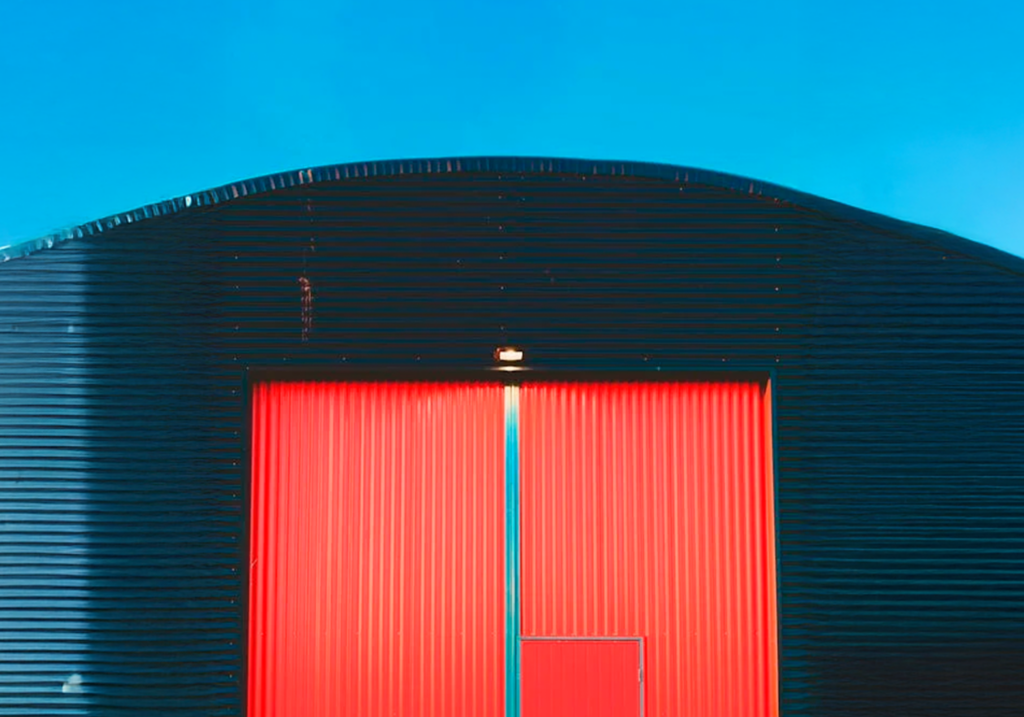Metal barns have become a popular choice for property owners due to their durability. With that said, they still require regular attention to ensure they last for decades. A well-maintained metal barn can serve multiple generations, while one that is neglected can suffer from rust, leaks, and structural deterioration. Understanding how to properly care for your metal barn will not only protect your investment but also save you significant money and hassle over time.
In this comprehensive guide, we will walk you through practical steps and expert recommendations for maintaining your metal barn. From cleaning and inspections to repairs and preventive measures, this article is designed to help you get the most out of your structure.
The Importance of Regular Maintenance
Routine maintenance is critical in keeping your metal barn functional, safe, and looking its best. Unlike traditional wood structures that may rot or warp, metal buildings are more resilient to environmental stressors, but they are not immune to damage. Regular upkeep can help you catch small problems before they turn into costly repairs.
Additionally, maintenance protects the structural integrity of the building. Metal barns house livestock, equipment, feed, and sometimes serve as workspaces. Ensuring that the building remains stable and secure is essential for safety. Even minor issues like a loose panel or clogged gutter can escalate if left unaddressed.
Cleaning Your Metal Barn
One of the easiest and most effective ways to maintain your metal barn is to keep it clean. Dirt, grime, bird droppings, and plant debris can accumulate on the roof and walls over time. These materials can trap moisture and accelerate corrosion if not removed.
Start by rinsing the building with a hose or pressure washer. Use a gentle cleaning solution made for metal surfaces to scrub away stubborn stains. Be cautious not to use harsh chemicals or abrasive tools that could scratch the finish or degrade protective coatings. Clean both the exterior and interior surfaces, and pay special attention to roof gutters and downspouts.
Cleaning should be done at least once or twice a year, but buildings in areas with heavy rain, snow, or dust may require more frequent washing. The cleaner your building is, the easier it will be to spot issues like rust spots, dents, or leaks.
Inspecting for Damage
Routine inspections are another essential part of maintaining your metal barn. Walk around the exterior of the building and look for signs of damage or wear. This includes dents, rust, loose or missing screws, and gaps between panels. Don’t forget to check the roof, gutters, and downspouts.
Inside, look for signs of leaks, water stains, or condensation. Check the insulation and interior panels for mold or mildew. If your barn has a concrete foundation, inspect it for cracks or signs of shifting.
Ideally, you should conduct a full inspection at least twice a year—once in the spring and once in the fall. After severe weather events, such as heavy snow, hailstorms, or high winds, it’s also wise to do a quick inspection to catch any storm-related damage.
Preventing and Treating Rust
Rust is one of the biggest threats to metal buildings. It forms when moisture interacts with unprotected steel surfaces. To prevent rust, ensure your barn is properly coated with rust-resistant paint or finish. Galvanized and coated metals are designed to resist corrosion, but they still need regular inspection.
If you spot a small rust patch, treat it immediately. Use a wire brush to remove the rust and apply a rust-inhibiting primer followed by paint. Do not ignore these small patches; they can grow quickly and compromise the structural strength of the barn.
Keep vegetation trimmed away from the building to prevent trapped moisture, and ensure good drainage around the barn to avoid standing water near the foundation or walls.
Roof Maintenance
The roof is your barn’s first line of defense against the elements, so maintaining it is crucial. Check for loose or damaged panels, missing fasteners, or rust spots. Remove debris such as leaves, twigs, or bird nests that could block drainage or trap moisture.
Ensure that roof seams are sealed properly, and reapply sealant if necessary. Check the flashing and ridge caps to make sure they are secure and watertight. Snow should be removed if it accumulates beyond the recommended load capacity for your building.
Gutters and downspouts should be cleaned regularly to ensure proper water drainage. Clogged gutters can lead to roof leaks, foundation issues, and mold growth.
Maintaining Doors and Windows
Functional doors and windows are essential for ventilation, access, and light. Over time, hinges may loosen, seals can deteriorate, and tracks may get clogged. Lubricate all moving parts and replace any weather stripping that shows signs of wear.
Sliding doors and overhead doors should operate smoothly without jerking or sticking. If you notice warping, rust, or damaged rollers, address the problem promptly. Properly maintained doors and windows help keep pests out and control interior climate conditions.
Controlling Moisture and Ventilation
Moisture is the enemy of any building, and metal barns are no exception. Moisture can come from roof leaks, condensation, and poor drainage. Ensure that the barn is well-ventilated to prevent moisture buildup inside. Ridge vents, louvers, and exhaust fans help circulate air and reduce humidity levels.
Install vapor barriers beneath the roof and walls to prevent condensation from forming on metal surfaces. These barriers can make a significant difference in maintaining a dry, rust-free environment.
Around the perimeter of the barn, grade the soil so that water drains away from the structure. Adding gravel or French drains can also help divert excess water.
Pest Control
Rodents, insects, and birds can all cause damage to your metal barn. Mice and rats may chew through insulation or wiring, while birds can nest in rafters and leave behind corrosive droppings. Insects can invade stored feed and compromise the hygiene of the barn.
Seal any gaps or holes in the exterior where pests might enter. Install wire mesh over vents and keep doors closed when not in use. Regularly clean and inspect storage areas, especially where food or bedding is kept.
Lighting and Electrical Systems
Electrical components should be checked regularly for signs of wear, corrosion, or rodent damage. Lights should be bright and functional, and all switches and outlets should be in good working order. If your barn has automated systems for feeding, watering, or ventilation, include these in your routine checks.
Hire a licensed electrician to conduct a thorough inspection annually or as needed. Faulty wiring can lead to fires, so it’s important not to overlook this aspect of maintenance.
Structural Repairs
Over time, even well-maintained metal barns may need structural repairs. Expansion and contraction due to temperature changes, wind stress, or heavy use can loosen fasteners and cause panels to shift. Reinforce any areas that seem unstable and replace damaged framing or supports.
Cracks in the foundation should be sealed with appropriate concrete filler, and larger issues should be assessed by a professional. Don’t delay repairs, as structural weaknesses can quickly worsen.
Painting and Protective Coatings
Repainting your metal barn not only keeps it looking fresh but also protects it from rust and UV damage. Choose a high-quality paint formulated for metal surfaces, and apply a primer beforehand if the original coating is deteriorated.
Touch up paint chips as soon as they appear to prevent rust from forming. Consider using elastomeric coatings or reflective paints to enhance energy efficiency and extend the life of the paint job.
Winterizing Your Metal Barn
Before winter arrives, take time to winterize your metal barn. Inspect the roof and walls for any vulnerabilities and seal any cracks or gaps. Make sure heating systems, if present, are functioning properly and safe to use.
Remove debris from gutters and ensure proper insulation around pipes to prevent freezing. Keep snow removal tools handy and consider using roof snow guards to prevent sudden snow slides.
Setting a Maintenance Schedule
A good maintenance strategy includes a calendar-based plan. Set reminders for seasonal tasks such as inspections, gutter cleaning, and HVAC checks. Keeping a maintenance log can help you track repairs, note recurring issues, and plan for future upgrades.
If your barn is used for commercial purposes, proper documentation of maintenance can also support insurance claims or resale value.
When to Call the Pros
While many maintenance tasks can be performed by the owner, certain jobs require professional expertise. Roofing repairs, structural assessments, and electrical work should be handled by licensed professionals. If your barn has sustained significant damage or shows signs of foundation shifting, don’t hesitate to call an engineer or contractor.
Hiring a professional for an annual inspection can provide peace of mind and catch issues you might miss.
Conclusion
Maintaining and extending the life of your metal barn does not have to be a daunting task. With a proactive approach, regular inspections, and timely repairs, your barn can continue to serve its purpose for decades. Not only will proper maintenance protect your investment, but it will also ensure the safety of your animals, equipment, and anyone working inside. Whether you use your barn for agriculture, storage, or commercial purposes, taking the time to care for it pays off in reliability and peace of mind.

